Outlook FIX: Error Reading the Rules from the Server
The error “There was an error reading the rules from the server. The format of the server rules was not recognized.” appears when certain Outlook users attempt to open their mailbox from the standalone application. This problem usually occurs when the PC is part of a shared network.
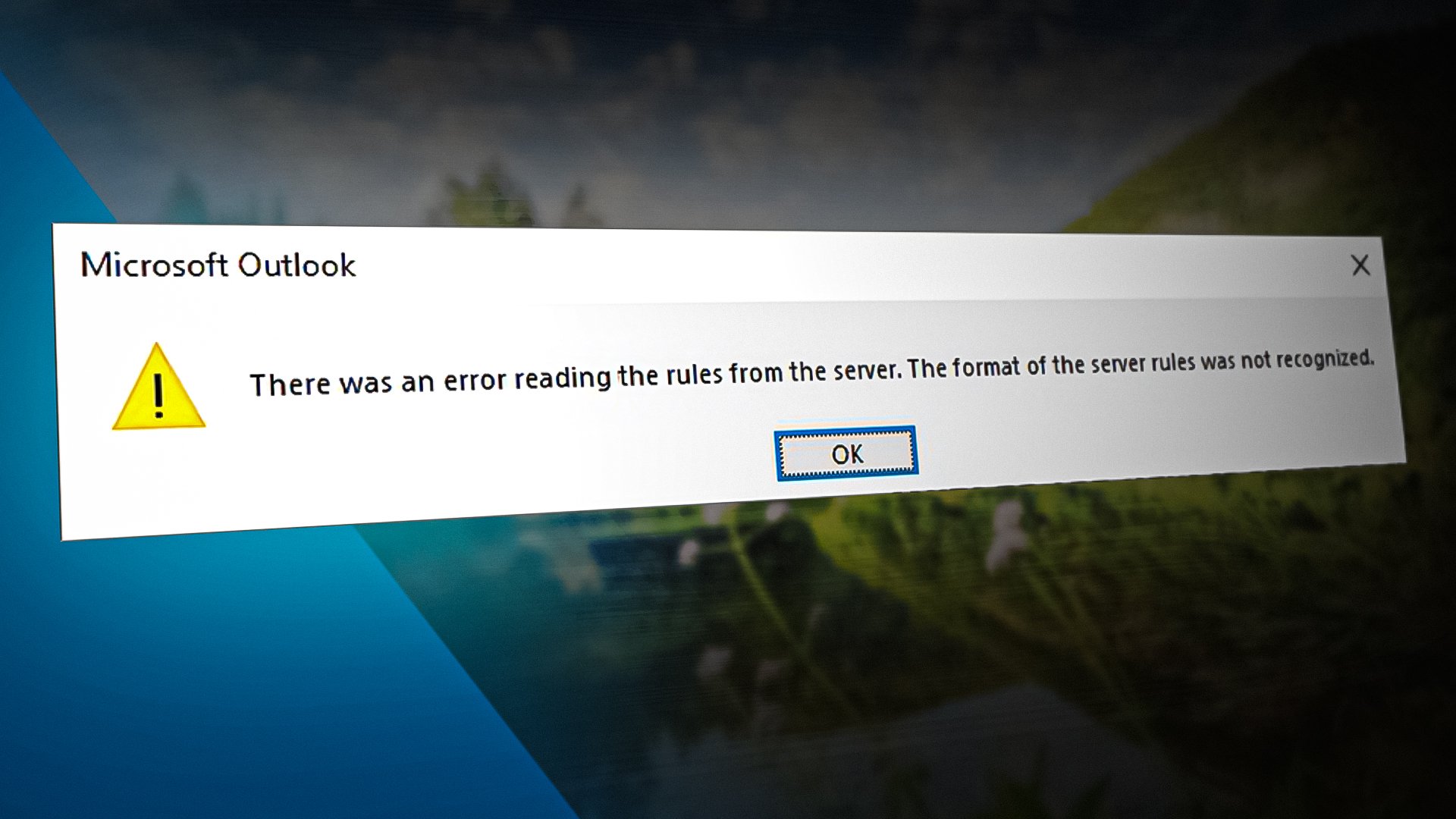
This problem is most likely related to an inconsistency in the rule engine. Although this can be fixed locally by reloading all the rules enforced by your organizations, you might also need to remove the problematic rule from Outlook.com.
If you’re dealing with a glitch affecting the rule engine, you will need to remove all the currently enforced rules before adding them again.
However, this problem can also be rooted in some kind of local file corruption. In this case, running the ScanPST.exe tool and resetting the Outlook.SRS file should get the issue fixed.
Below you’ll find a collection of confirmed methods that other affected users have successfully used to get to the bottom of this issue and fix the underlying cause.
1. Reset the rule engine
If you have multiple mailboxes in your Outlook profile, the first thing you need to do is reset the rule engine by running the /cleanrules command from a run box before rebuilding the rules on the server again.
Here’s a quick guide on how to do this:
- Open Outlook and click on File > Manage Rules & Alerts.
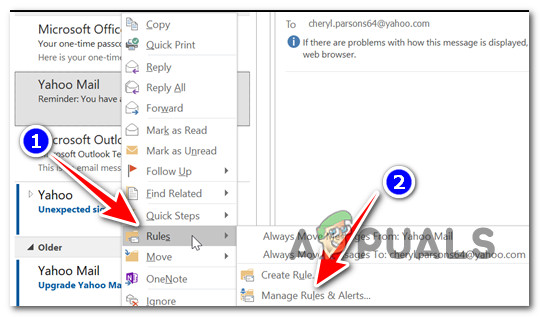
Access the Manage Rules tab - From the drop-down, click on Options.
- Click on Export rules, select a folder where you want to save the newly created local files, and assign a name.
- Click Save to create a local backup of your rules.
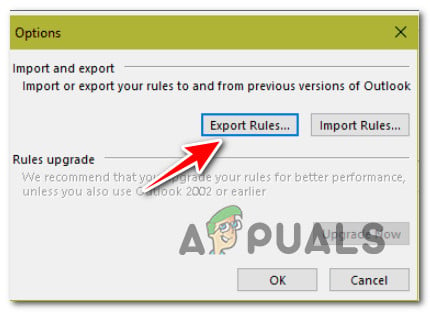
Exporting the rules Note: If you have several Exchange accounts, you must export the rules associated with each account and name the exported files with the email address to avoid confusion. Additionally Each profile if you have many.
- Once the backup has been created, close Outlook and make sure it’s not running in the background.
- Press Windows key + R to open up a Run command.
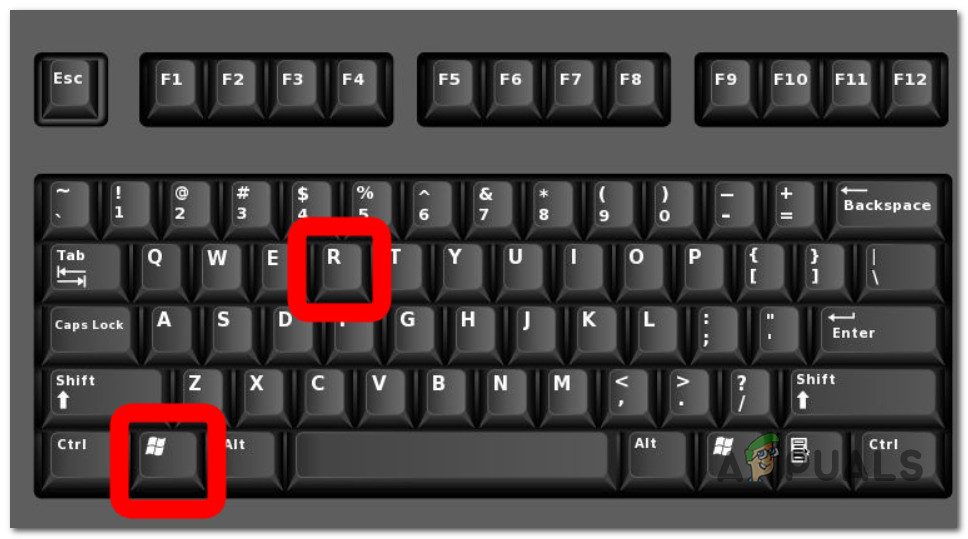
Press Windows key + R - Inside the Run command, type the following command and press Ctrl + Shift + Enter to run with admin access:
"C:\Program Files\Microsoft Office\root\Office16\OUTLOOK.EXE" /cleanrules
Note: This command will effectively reset the entire rule engine. If the installation path is different, adjust it accordingly. If you want to be specific, consider one of the following commands:/cleanclientrules = This command will ONLY remove the client side rules /cleanserverrules = This command will ONLY remove the server side rules
- At the User Account Control (UAC), click Yes to grant admin access.
2. Delete & Re-add all currently enforced rules
The locally stored Outlook rules can also trigger the ‘error reading the rules from the server‘ error message. If you want to avoid running commands from the terminal, one way to fix it is to export the rules to a local file before deleting all the rules and restarting Outlook.
Here’s a quick guide:
- Open Outlook and click on File > Manage Rules & Alerts.

Access the Manage Rules tab - From the drop-down, click on Options.
- Click on Export rules, select a folder where you want to save the newly created local files, and assign a name.
- Click Save to create a local backup of your rules.
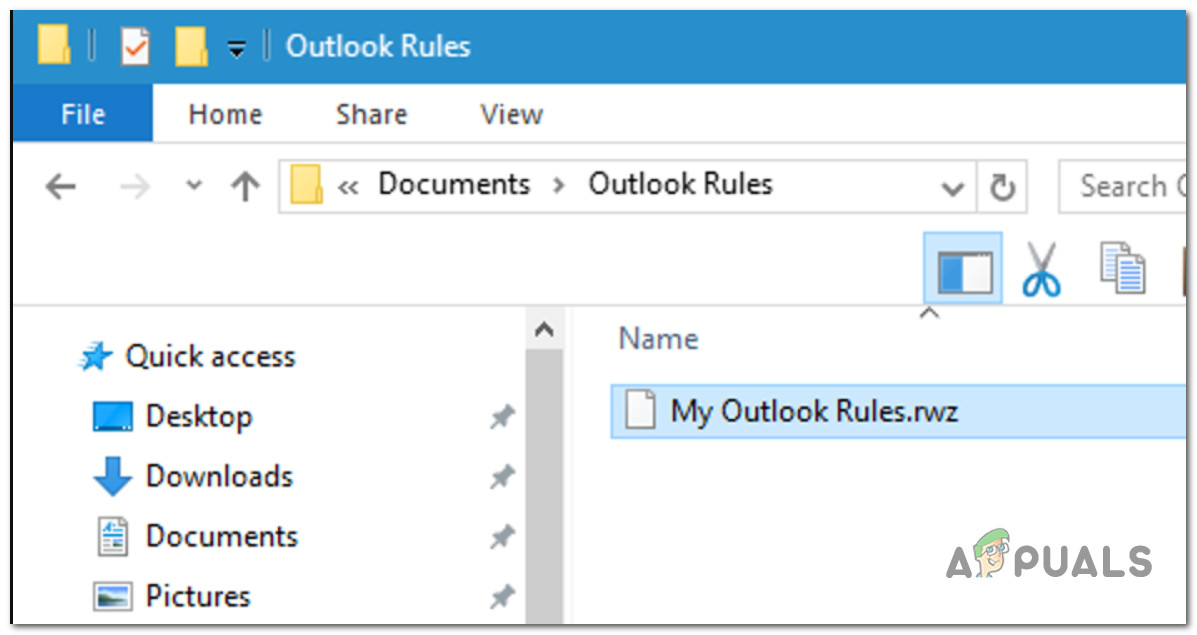
Exporting the rules - Once the backup has been created, restart Outlook and reconnect your account if prompted to do so.
- Go to File > Rules and click on Manage Rules & Alerts.
- Next, you will be asked to select between client and server. When you see this prompt, click on client.

Choosing the client - Click on Import rules and import the rules backup you previously saved at step 4.
- Restart Outlook and see if the problem is now fixed.
3. Delete the latest rule from Outlook.com
If you only started to experience this issue after you added a new rule locally to Outlook and you already tried resetting the rule engine, it’s likely that you get this error because a bad rule is still being enforced at a server level.
To fix this, you’ll need to login into Outlook.com with your mailbox account and delete the newly created rule.
Here’s a quick guide on how to do this:
- Open your browser and navigate to https://outlook.office.com/owa/owa/owa/owa/.
- Log in with the same mailbox that you use locally.
- From the main dashboard, click on the gear icon (top-right corner of the screen).
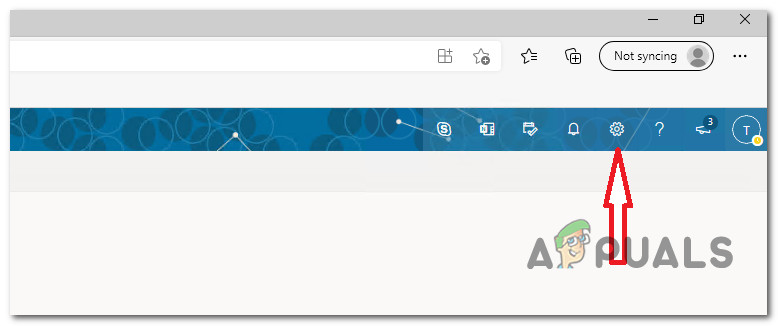
Access the Settings menu - In the search box associated with the Settings menu, type ‘rules’, then click on Inbox rules.
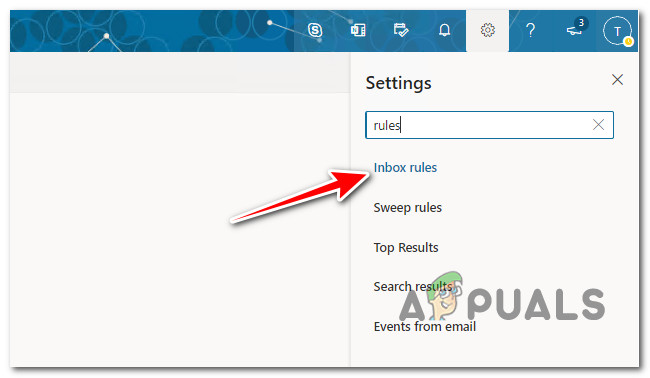
Access the Inbox Rules menu - Next, you’ll see a new set of settings opening up showing all your current inbox rules. Find the rule that you last added when you started to experience the Error Reading the Rules from the Server and remove it by clicking on the bin icon.

Delete the rule that was added lastly
4. Reset the Outlook.SRS file
If you get this error on and off and there are scenarios when Outlook boots up without the “There was an error reading the rules from the server” error, it’s likely that the issue is rooted in the .SRS file.
Note: The SRS file contains the send and receives parameters for your active Outlook account. It stores the settings from the Send and Receive dialog, which appears when you press Ctrl+Alt+S. It is essentially the file extension of an Outlook file saved on your PC. This file includes information on email sending and receiving for an Outlook profile. The filename depends on the name of the user’s Outlook profile.
You won’t be able to delete this file because it’s likely in use by Outlook and locked, but you can rename it to force the client to ignore it and create a new file automatically the next time you open the email client.
Follow the instructions below to fix any underlying send / receive corruption issue that’s causing the error:
- Make sure Outlook is closed and not running in the background.
- Open File Explorer (Windows key + E) and navigate to the following location:
C:\users\username\AppData\Roaming\Microsoft\
Note: Keep in mind that username is simply a placeholder. Replace it with the actual username on your PC.
- Once you are inside the correct location, go through the various files and locate the Outlook.srs file.
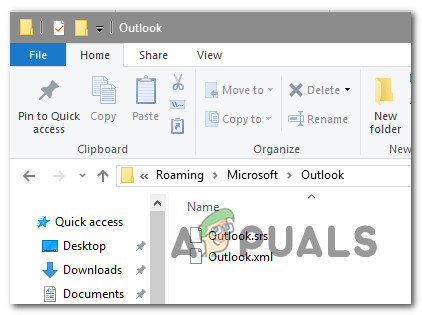
- Right-click on Outlook.srs file and click on Rename from the context menu that just appeared.
- Inside the renaming tab, add ‘.old’ at the end to force Outlook to ignore it. The final naming convention should be Outlook.srs.old.
- Launch Outlook once again and see if the problem is now fixed.
5. Run the ScanPST.exe tool
In case the issue is rooted in the personal folder (.pst) that you use for Outlook, resetting your rule engine will not do much to fix the issue.
In this particular scenario, other affected users have managed to fix the issue by using the Inbox Repair Tool to automatically repair every logical error and code line inconsistency associated with your personal folder.
Note: The ScanPST.exe utility is meant to assist in repairing personal folder (. pst) file-related issues. Depending on your operating system, the Inbox Repair utility is automatically installed with all English-language Microsoft Outlook installation choices.
If the issue stems from the personal folder profile, scanning the Outlook data using the ScanPST.exe application should help you to resolve it quickly.
Here is a step-by-step explanation of how to repair an Outlook data file using the ScanPST.exe utility:
- Start by closing Outlook and any other associated applications.
- Next, use File Explorer and go to one of the following places (depending on your operating system architecture):
C:\ Program Files - 64-bit Versions C:\ Program Files - 32-bit Versions
- Navigate to the correct path, then use the search feature in the upper-right corner to look for ‘SCANPST.exe’ and double-click on it.

Running the ScanPST tool Note: If you are unable to locate the SCANPST executable using the search feature and you are using an older Office version, you can manually search for it in one of the following locations:
2016: C:\Program Files (x86)\Microsoft Office\root\Office16 2013: C:\Program Files (x86)\Microsoft Office\Office15 2010: C:\Program Files (x86)\Microsoft Office\Office14 2007: C:\Program Files (x86)\Microsoft Office\Office12
- Once you’ve located the PSTScan.exe program, launch it and select the Browse button to specify the location of your PST file. Once you have successfully loaded the proper file into the Inbox Repair program, click Start to perform a scan for corruption.

Go to the correct PST files Note: The PST file’s default directory is Documents\Outlook Files.
- After the procedure has been completed, a dialog box will display the problems and inconsistencies that were discovered.
- Before clicking Start to begin the procedure, it is advisable to check the box labeled Create a
backup of the scanned file. This will provide a backup in case something goes wrong with this procedure.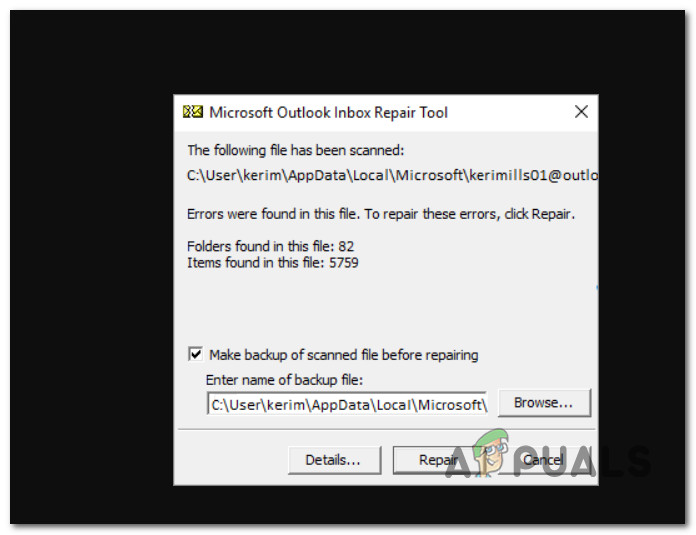
Repair the Outlook installation - Once the process is complete, launch Outlook to determine if the issue has been addressed.




